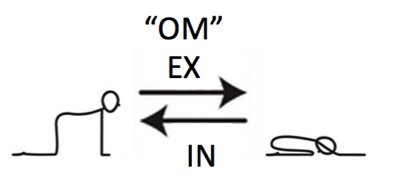|
Interested in incorporating mantras into your daily yoga practice? Bringing them into your asana practice is an excellent way to strengthen focus and deepen the benefits of yoga. Here are a few tips and an introduction exercise for beginners. What is a mantra? A mantra is a syllable, group of words, or phrases, which can be recited orally or silently. In Sanskrit, it is a term that combines two words: mananat (reflection) and trayate (protection). According to Yoga tradition, when we chant and reflect on a particular mantra we will see and experience the quality of that mantra, and thus we will be protected. For example, mantras that focus on the sun (e.g., sūrya) embody the qualities of light, energy, and radiance. Mantras focused on the moon (e.g., somena) evoke qualities that are cooling and nourishing. Chanting mantras before and during meditation has numerous benefits; it has subtle yet penetrating effects on both mind and body. Chanting, which creates vibrations in the throat, chest, abdomen, and jaw, has been found to stimulate vagal sensory afferents and promote relaxation [1]. Introducing mantra into your asana Using a mantra while practicing yoga postures (asana) is an excellent way to strengthen one’s focus, which in turn deepens one’s practice. Here are a few ways to include mantras in an asana practice:
An example of chanting “Om” on the exhalation in asana Starting with Om
Om is an powerful, yet simple mantra to begin using because it is a bija (seed) mantra. Bija mantras are one syllable and activate specific energy points to balance or purify the mind and body. Om is a sacred word that encompasses all other sounds in the universe. It is the primary sound from which all others emerged. While it is often written “Om”, a more accurate transliteration is “AUM” since there are three distinct sounds that blend together. The mantra represents four states of consciousness. A – is the conscious, or waking, state U– is the unconscious, or dream, state M – is the subconscious, or deep sleep, state There is a pause at the end of AUM, which represents the state of infinite consciousness How to pronounce Om Here are a few tips for pronunciation:
If you choose to chant out loud on the exhalation, the sound should come easily and comfortably. If you feel short of breath or any discomfort, alternate between orally and silently as you build up the breath capacity to chant out-loud. Here's how to try it today Chant Om when you exhale during any forward bending pose, such as Uttanasana (standing forward bend) or chakravakasna (as pictured above). Or during a gentle breathing practice at the end of your practice. The only hard-and-fast rule when chanting is to chant with joy and gratitude from the heart – so don’t hesitate to begin today! Stay tuned for more Monday Mantra tips and sign up for the monthly newsletter with more detailed suggestions for practice. 1. Brown, R.P., Gerbarg P. L. (2005). Yoga: A Breath of relief for Hurricane Katrina refugees. The Journal of Family Practice, Vol. 4, No. 10. http://www.jfponline.com/Pages.asp?AID=2736
0 Comments
|
It is a tremendous honor that my article on sharing yoga with Syrians won "Yoga Article of the Year" in Seattle Yoga News. Endless gratitude to everyone who was part of and supported this inspiring project.
Archives
July 2017
Categories
All
|



 RSS Feed
RSS Feed